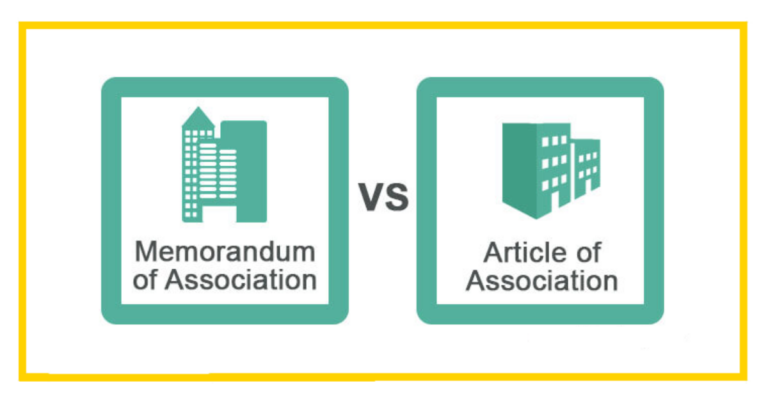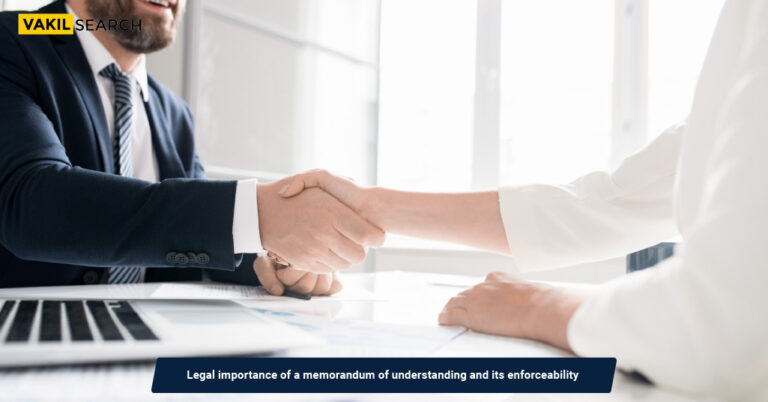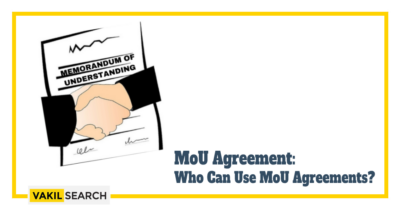This blog describes a Memorandum of Understanding Agreement and provides tips on Creating a Memorandum of Understanding Agreement. It explains how to draw up an MOU Agreement and the many benefits of one.
Create an MoU: In the rat race of today’s world, where time is the costliest currency one has in their hands, people are perpetually seeking ways to make the best use of it and not compromise it for long, strenuous and tedious tasks that don’t yield great returns. Even though Legal records, files and contracts, come with their own set of advantages, and demand more accord and adherence, they are a time-consuming, stressful process, lengthy and more often than not shift the emphasis of a projection from execution to adherence to guidelines and rules that regulate its execution. Let’s learn how to create an MoU in this article.
However, when a Memorandum of Understanding is considered, it is conveniently looked upon as a less worrisome document than a legally binding record of events regarding the terms of a potential purchase, negotiation, business transaction or undertaking of a project by more than one or several parties, with mutual benefits and common interests, motives and goals, that doesn’t hinder growth, can be updated and amended without much hassle and principally just keeps a track of events and occurrences in the commitment of one party with its business counterparts and the agreements, investments, management and execution related to the task at hand, that essentially binds them together in a team.
What are the Benefits of an MOU Agreement?
The requirement of a Memorandum of Understanding Agreement is very imperative for a business plan involving multiple parties to stay afloat:
- Since an MOU Agreement is Tangible Proof, it has lesser chances of being abandoned by fellow business ventures, enterprises, organisations, institutions or individuals. Since it forms collateral networks through the agreement and involves more than one individual’s reputation, it cannot be tossed around carelessly.
- Even though it is not the same as a legal document or accord, certain connotations involved in the Memorandum of Understanding can be made legally binding, for the ones involved in the execution of the project that has been embarked upon, collectively by the coalition of different entities and companies.
- The imminent worry and concern of having to abandon a project because the testimony of several companies working together was perhaps just a verbal commitment, where shirking off of responsibility and investment of issues is not a big grave thing for the people, companies, organisations and institutions of war.
- This uncertainty can be driven away from the premises of working in coalition, when the progression of work, details of associate work parties, vendors, manufacturers, negotiators, completion of sub-tasks, project milestones etc, are jotted down in the record maintained from the day the contract has been rendered effective by participating parties.
- Since, the Agreements, comprise prior commitments, in a written transmissible form, which also contains the agreement signatures of the parties involved, no plan amendment can be processed, broadcasted or implicitly officiated without acquainting all other parties, organisations and institutions involved with the project. Hence, sudden discontinuation is also out of question.
- However, officially stepping down from a contract, without any hidden motives, through to the corresponding events, is relatively easier. Intimating every business counterpart and ending the contract on good terms is reflective of professionalism and necessary to ensure a well-rounded off involvement in a coalition project.
How to Make/Create MOU Agreement?
Although they sound pretty much the same, a memorandum of Understanding and a Memorandum of Agreement, have some elementary differences. The former is just mutually inclusive of the latter and consists of more amounts of relevant information than the latter does. Both these memorandums consist of an offer of a coalition made and its acceptance. There must be two or more parties in the context of the agreement who decide upon or propose date from when the agreement shall be rendered effective.
It also consists of the contact details of all the relevant parties, elucidates in conspicuous language the idea and vision of the agreement, and the nestled interests of each party. It further enlists what the coalition is seeking to achieve together and individually. Both these documents have space for all necessary signatures of agreement and consent.
The contents of a Memorandum of Agreement are along the lines of the pact as it is received by the parties involved in the agreement process. It essentially mentions how the parties are interested in working with each other, likely towards a common endeavour and have a genuine interest in helping one another accomplish the tasks at hand when you create an MoU. It is the basic acceptance of a contract, which does not necessarily elaborate on the project’s specificities or interests or tenure and its renewal. The MOA, which can also be treated as a temporary implication of sorts, without the specific details or not being succeeded by the Memorandum of Understanding, which is simply the official furtherance of the Memorandum of Agreement/ project, as a whole, is not of much consequence.
How is a Memorandum of Understanding Different from a Memorandum of Agreement
Memorandum of Understanding are around and about the field of action; it enlists alongside the details of the events already agreed upon, potential milestones of the project undertaken, and so on. Contents are a key element in rendering a simply officiated memorandum into something legal if the clause involved in the content list incorporates a legally binding one. The parties concerned shall be the ones to incorporate it, so there wouldn’t be a scope of unconsented involvement of any provision in section or subsection which is likely to go against the unanimity of agreement of the parties.
In short, both the Memorandum of Understanding and Memorandum of Agreement are essentially the acknowledgement of the acceptance of an offer made mutually between two or more parties. The former is more specific and has great detailing in the process and enactment of the task than the latter. Since the project’s vision is a shared result of the investments and work of the involved parties, everyone is required to be consenting, and there should be a complete absence of coercive developments in the project.
The basic differences between a memorandum of Agreement and a Memorandum of Understanding are:
- The memorandum of agreement is a document which merely implicates the acceptance of the proposal of a coalition. In contrast, the memorandum of understanding acknowledges the coalition and partakes in the proceedings, laying out plans, details, pursuit and goals to be achieved. It is highly specific and has signatures of consent over the tenure or duration of the whole project.
- The key points in a Memorandum of Agreement include the proposal of a coalition and the acceptance of working with one or more than one party. It has no mention made of the plan of action, the project was undertaken, or the tenure for which it may last. Whereas the Memorandum of Understanding, consist of the agreement, the coalition, identity details, address proofs of business or institutions, or organizations, responsibilities and investments, a plan of action and intent, and finally, execution and benefits reaped, hence.
- Both memoranda of Agreement and Memorandum of Understanding are not legally binding, but the record tracking due to the specifics involved in the content and clause of a memorandum of understanding makes it enforceable to redirect the concerning business counterparts into following through to what has been committed. Moreover, there is the scope of adding a sub-contextual legal clause in a memorandum of understanding, thus making it imperative for the associated business partners to adhere to what they have consented to.
- An agreement, is proof of the said acceptance of the offer of working together. There could be monetary reparations in the Memorandum of Understanding, for a task unfulfilled by one business counterpart.
Conclusion – Create an MoU
As the terms, Memorandum of Agreement and Memorandum of Understanding is used interchangeably, the aforementioned points may help clear some of the prevailing confusion. It also demarcates the purpose of signing the two documents, separately. There is also a provision for clubbing them into one. As understood from the text, the purpose of these records is to shed light on how most businesses thrive on clear official communication. Lackadaisical claims and commitments get the formularizing and strategising nowhere, for years on end. Legal accords and legal bodies have other significance for more serious cases that arise on business frontiers.
Not everyone is willing to sign up for months of court trials over one failed project due to the lack of committing counterparts. It is to be accepted in simple terms that MOU agreements are, however, still not legally binding, even if the clause mentioned in them, are. The companies involved cannot take legal action for a failed business project which could be entirely due to one party or parties that resort to bail out without consequences, without seeing the undertaken task to completion. If you wish to create an MoU in India, you may get the needed help from Vakilsearch. For any kind of hassle-free legal process, our experts can help.
Read also;










